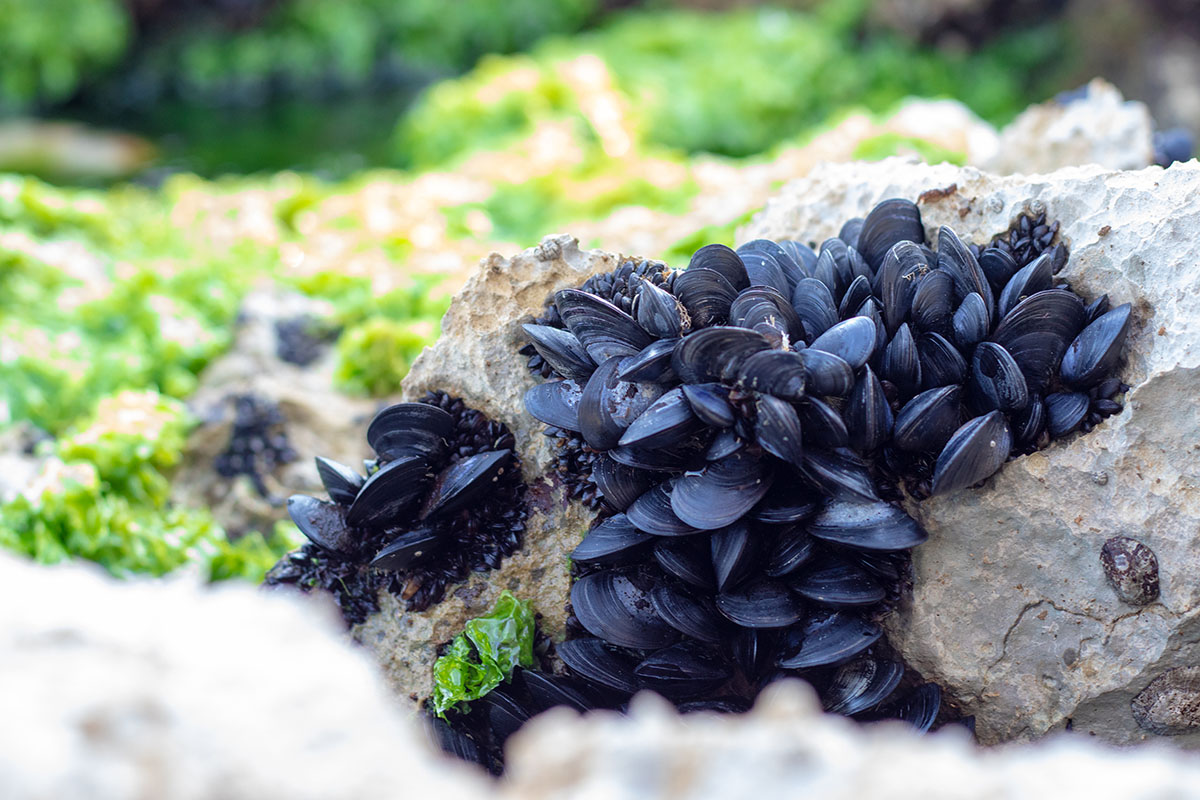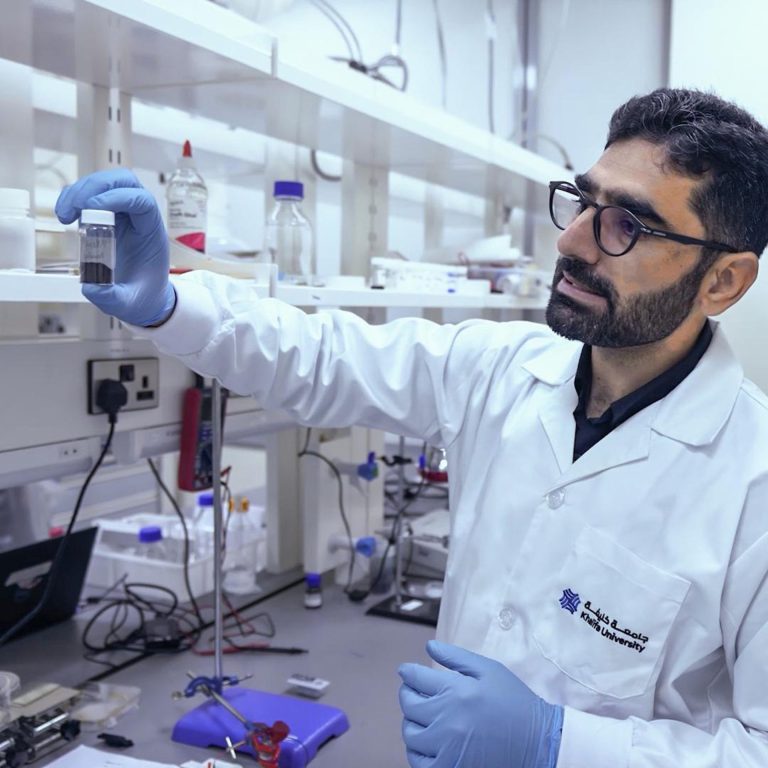A mussel-inspired designer adsorbent for efficient pollution control
Interdisciplinary collaboration between research centers at Khalifa University finds functionalized polydopamine nanoparticles to be highly effective at adsorbing dyes present in industrial waste.
With an estimated 700,000 tons of dyes used in industrial processes each year, the pollution of surface and groundwater poses a serious environmental threat demanding a sustainable, selective and cost-effective approach. Inspired by the behavior of mussels, which excrete the polymer polydopamine (PDA) in order to stick to a surface, an interdisciplinary research team from Khalifa University has developed a customized adsorbent that selectively targets anionic dyes.
The adsorbent, designed by scientists from the Center for Membrane and Advanced Water Technology and the Research and Innovation Center for Graphene and 2D Materials (RIC2D), consists of nanoparticles of PDA functionalized with an ionic liquid called IL-3 aminopropyl ammonium acetate to selectively engineer the adsorption properties. When tested in the lab with the anionic dye Alizarin Red S (ARS), it was found to be a highly efficient adsorbent, offering promise for anionic dye removal from contaminated water flows. Tests on mixtures of ARS and other dyes (commercially dubbed MB, MO and CR) also confirmed its selective adsorption of ARS1.
“This [research] will enable us to create so-called ‘designer adsorbents,’ which can be tweaked and modified for the target pollutant on hand.”
Hassan Arafat
The regeneration and reusability of the PDA-IL adsorbent were validated through a series of four consecutive adsorption/desorption cycles, using methanol to regenerate the adsorbent, without notable deterioration in its performance or structure. The team is confident that the adsorbent will work with other anionic dyes.
To date, most research on adsorbents for pollution control has focused on targeting cations rather than anions, due to the high challenge posed by the latter. KU’s research brings new opportunities for targeting difficult to remove pollutants. “Ionic liquids have unique properties and there is a wide catalog of these materials. This will enable us to create so-called ‘designer adsorbents,’ which can be tweaked and modified for the target pollutant on hand,” explains chemical engineer Hassan Arafat, RIC2D Senior Director. “This approach could have a wide range of environmental field applications.”
Reference
Alwan, R.A., Zhuman, B., Kumar, M., Arafat, H. & AlNashef, I. Mussel-inspired polydopamine functionalized with ionic liquid as a novel, eco-efficient adsorbent for the selective removal of anionic pollutants from aqueous solutions. Chem. Eng. J. 454 140498 (2023). | Article




